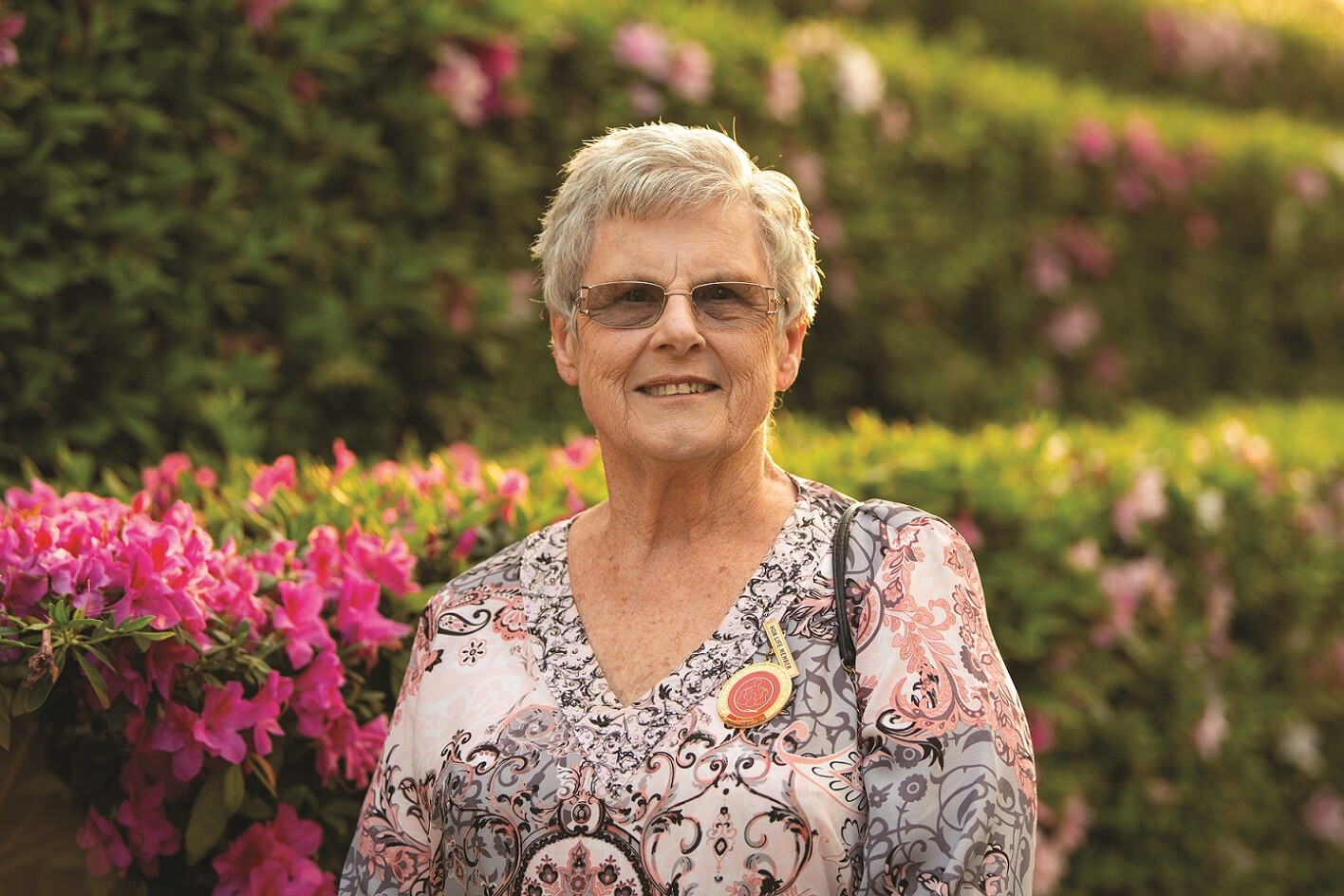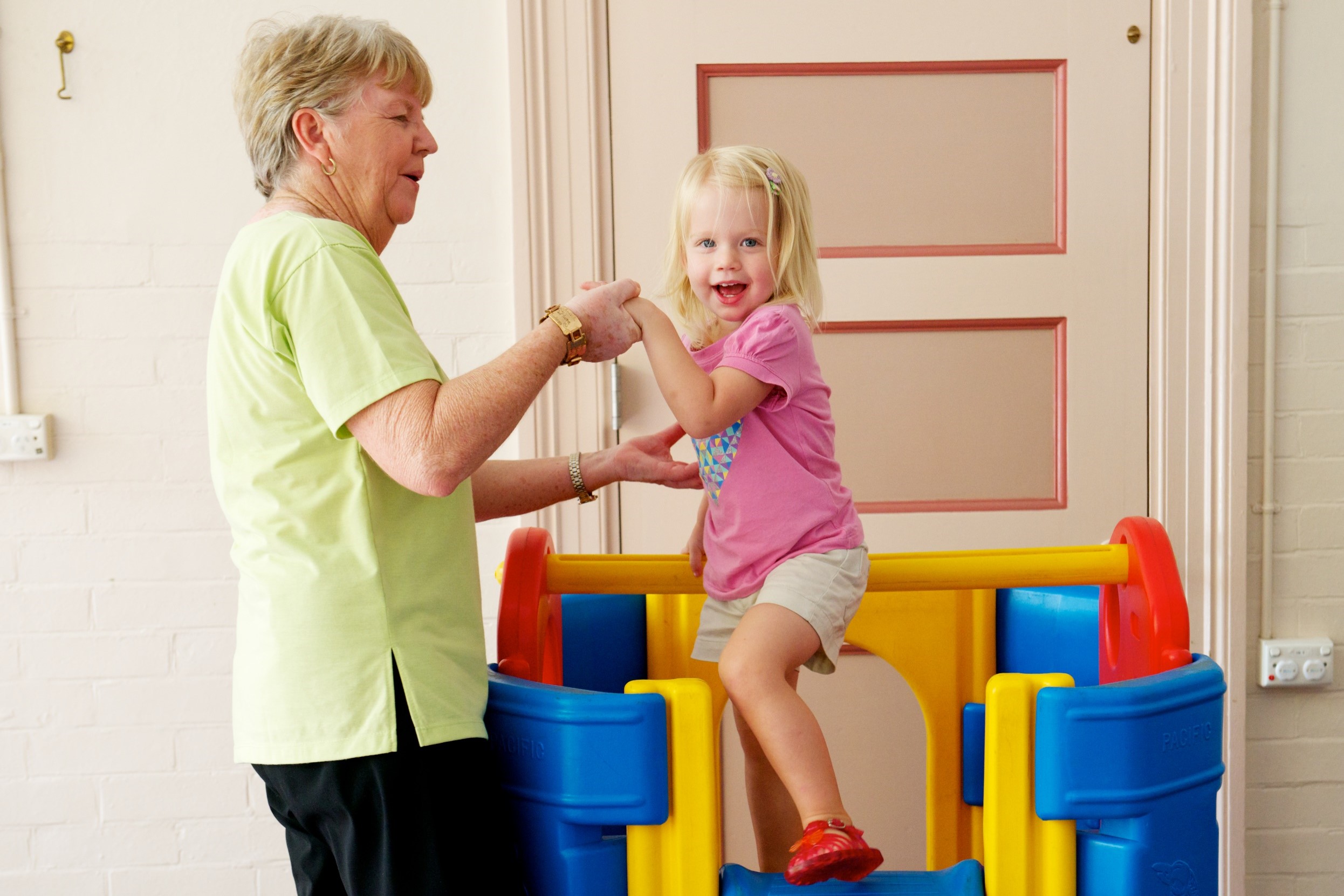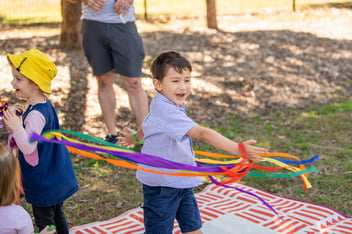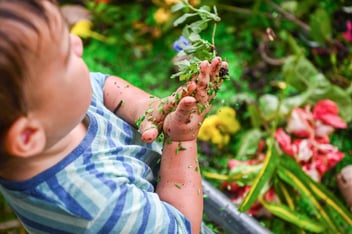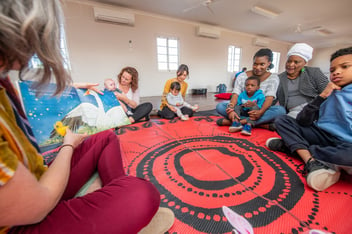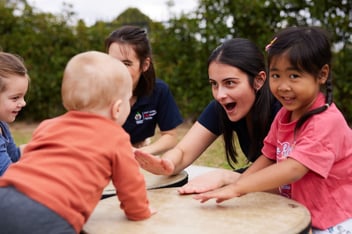
The Benefits of Intergenerational Play: Bridging Generations Through Fun and Learning
Blog > The Benefits of Intergenerational Play: Bridging Generations Through Fun and Learning

The Benefits of Intergenerational Play: Bridging Generations Through Fun and Learning
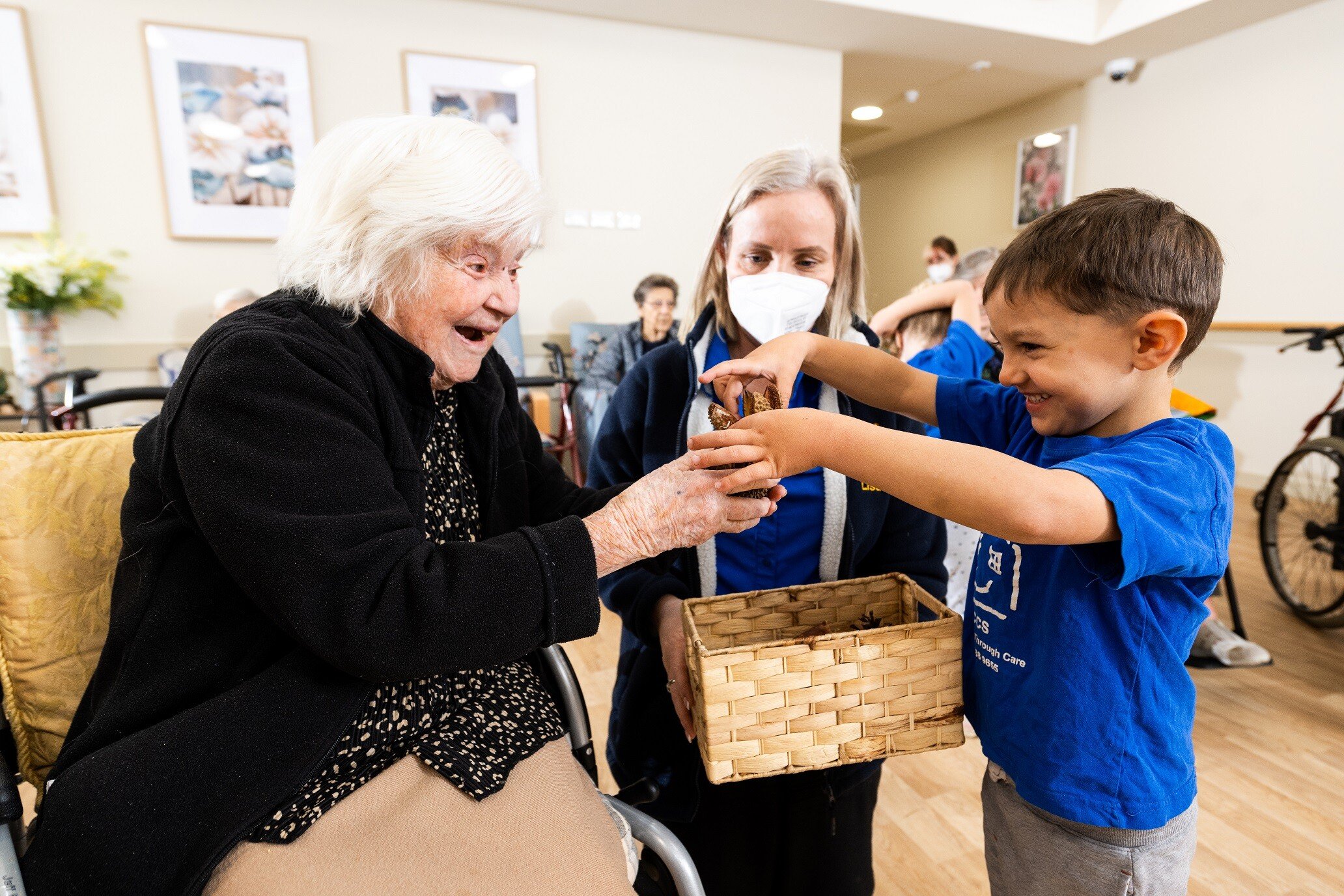
Imagine a lively park where children and older adults play with bubbles - chasing, running, and catching them before they pop. The children's laughter mixes with the seniors' happy shouts, creating a symphony of connection between generations. This kind of intergenerational play benefits everyone - the children learn important skills like reading social cues, cause and effect, sharing and cooperation, older adults build important social connections, improve their capability, and share joy in the moment. According to a study, intergenerational activities can greatly improve the well-being of older adults, enhancing their self-esteem and reducing symptoms of depression (BMC Geriatrics, 2014). In an age where families are increasingly isolated and intergenerational homes are becoming less common, intergenerational play offers a refreshing and impactful way to bridge the gap between young and old.

Fostering Cross-Generational Connections
Playing together across generations involves activities that bring children and older adults together, helping them to understand, respect, and enjoy each other. This special kind of interaction:
-
Makes life better for both age groups
-
Strengthens the bonds of our communities
-
Acts as a bridge between generations
-
Improves thinking and social skills
-
Promotes emotional well-being
At the same time, they give older adults a renewed sense of purpose and connection (Generations Working Together, AAIP, 2021).
Research into dementia prevention, aging and early childhood researchers have recognised the benefits of intergenerational play, and this has seen many initiatives such as intergenerational playgroups, visits from early childhood centres and kindergartens to retirement villages and the popular ABC television programs, Old People’s Home for 4 Year Olds and Old People’s Home for Teenagers have shown overwhelmingly positive results.
Bringing intergenerational play into educational and community settings creates enriching experiences that support lifelong learning and empathy. Whether you're an educator looking for new classroom ideas, a parent wanting to build stronger family bonds, or a community leader aiming to create stronger connections between generations, this guide provides valuable perspectives and practical advice.

Understanding Intergenerational Play
What is Intergenerational play?
Intergenerational play refers to activities that bring together individuals from different age groups, particularly children and older adults, to engage in shared play experiences. Intergenerational play focuses on meaningful, direct engagement between the participants. This type of play can occur in various settings, including homes, schools, community centres, and parks. It often involves a wide range of activities designed to be enjoyable and beneficial for all ages.
Types of Intergenerational Play
Intergenerational play includes many activities, each offering unique ways to connect and learn. Here are some common types:
Board Games: Games like chess, checkers, and Scrabble boost strategic thinking and friendly competition. They promote communication and can be adapted for different skill levels.
Arts and Crafts: Activities like painting, knitting, and scrapbooking foster creative expression and working on shared projects. They also serve as a medium for storytelling and sharing personal histories.
Puzzles: Jigsaw puzzles and brain teasers enhance problem-solving skills and teamwork. They require patience and collaboration, making them ideal for intergenerational play .
Storytelling: Sharing stories through reading aloud or recounting personal experiences helps bridge generational gaps. It improves listening skills, and emotional connections, and allows older adults to pass down wisdom and cultural heritage .
Digital Games: Video games and interactive apps designed for multiple players can be a fun way to engage tech-savvy children and older adults. These games often include elements of strategy, coordination, and quick thinking.
Outdoor Activities: Simple games like tag, hide-and-seek, and gardening can be physically engaging and enjoyable for all ages. These activities promote physical health and provide a natural setting for interaction.

Benefits for Children
Cognitive Development
Intergenerational play significantly enhances children's cognitive development. When children do activities with older adults, they gain access to valuable knowledge and experience which can help their brains grow. For example, playing games that make you think ahead or recall things helps keep the mind sharp and delay cognitive decline. These activities often involve:
-
Strategic planning
-
Memory recall
-
Ability to anticipate outcomes
All these are crucial cognitive skills (Generations Working Together).
Social Skills
Playing with older adults helps children learn important social skills. Intergenerational play teaches children to:
-
Communicate effectively
-
Listen attentively
-
Respect different perspectives
These experiences help children understand how others feel as they learn to care about and appreciate the thoughts and feelings of their older playmates. Playing together across generations also helps children learn more about the world around them. Through interactions with older adults, children learn about:
-
Different ages and life stages
-
Cultural backgrounds
-
History
This wider view of the world helps children become more aware of society and sensitive to different cultures (Generations Working Together).
Emotional Well-being
The emotional benefits of intergenerational play for children are profound. When children play with older adults they feel:
-
Safe and secure
-
Important and cared for, which is vital for children learning to manage their emotions
Intergenerational play can also reduce anxiety and stress in children. Many older adults are calm and caring, creating a peaceful feeling around children so they feel more relaxed and at ease (Generations Working Together).
Benefits for Older Adults
Cognitive Health
Intergenerational play offers significant cognitive benefits for older adults, helping to maintain, and even improve cognitive functions such as memory and problem-solving skills. Doing activities with children gets their brains working harder, encouraging them to think creatively and stay mentally on the ball. For example, playing games that require strategic thinking or memory recall can help keep the mind sharp and delay cognitive decline (NCBI, 2014, AAIP, 2021).
Physical Health
The physical benefits of intergenerational play for older adults are remarkable. Joining in physical activities with children, such as playing tag, gardening, or simple exercises, can improve:
-
Muscle tone
-
Coordination
-
Reaction time
These activities keep older adults active, which is crucial for maintaining physical health and mobility. Research shows that older adults who play with younger people tend to be healthier overall, including improved muscle strength and balance (NCBI, 2014, AAIP, 2021).
Emotional and Social Well-being
Intergenerational play significantly enhances the emotional and social well-being of older adults. Regular interaction with children can reduce feelings of loneliness and social isolation, which are common among the elderly. These interactions provide a sense of purpose and belonging, as older adults feel valued and appreciated by the younger generation. Studies have shown that older adults who participate in intergenerational activities report improved mood, reduced anxiety, and a greater sense of overall well-being (NCBI, 2014, AAIP, 2021).
Mutual Benefits and Community Impact
Building Relationships
Intergenerational play improves family bonds and community connections by creating opportunities for meaningful interactions between different age groups. When children and older adults engage in shared activities, they build trust and understanding, strengthening familial relationships. These interactions can also extend beyond the family unit, fostering a sense of community (Care for Kids).
Cultural Exchange
One of the best aspects of intergenerational play is the exchange of cultural values, traditions, and skills between generations. Older people have vast knowledge and experiences to share with children, like stories from the past, traditional crafts, and life skills. This sharing helps keep these traditions alive and ensures valuable practices are passed down to future generations. Children, in turn, can introduce older adults to new technologies and contemporary cultural trends, making it a fun learning experience for everyone (Care for Kids).
Community Resilience
Intergenerational play can bridge generational divides and strengthen community resilience. By bringing together different age groups, these activities promote understanding and cooperation, both essential for a resilient community. Intergenerational programs can help break down stereotypes and reduce age-related prejudices, fostering a more inclusive and harmonious community (Care for Kids).

Practical Tips for Encouraging Intergenerational Play
Creating Playful Environments
Designing spaces that promote intergenerational play is crucial for fostering these interactions. Here are some suggestions for creating such environments:
Parks and Playgrounds: Design parks with features that cater to both children and older adults. This can include accessible walking paths, benches, and play equipment that can be used by all ages (Australian Government Department of Health).
Community Centers: Community centres can host intergenerational programs and activities, such as cooking classes, art workshops, and game nights. These centres can provide a safe and welcoming space for different generations to come together and engage in shared activities (Australian Government Department of Health).
Digital Platforms: In today’s digital age, online platforms can also facilitate intergenerational play. Virtual games, video calls, and online storytelling sessions can connect family members who live far apart (Australian Government Department of Health).
Overcoming Barriers
While intergenerational play offers many benefits, there are common challenges to address when organising these interactions:
Scheduling Conflicts: Finding a time that works for both children and older adults can be challenging. To overcome this, families and communities can plan activities during weekends or holidays when both age groups are more likely to be available (Australian Government Department of Health).
Physical Limitations: Older adults may have physical limitations that make certain activities difficult. To address this, choose activities that can be easily adapted to different physical abilities (Australian Government Department of Health).
Transportation: Accessing transport can be a barrier for older adults. Communities can organise transportation services or carpooling options to help older adults attend intergenerational activities (Australian Government Department of Health).
Intergenerational play offers a wide range of benefits for both children and older adults. We encourage you to engage in intergenerational play and experience its profound benefits. Whether you’re an educator, parent, or community leader, there are numerous ways to incorporate intergenerational activities into your routine.
Share your experiences and ideas in the comments section below, and let’s work together to build stronger, more connected communities through the power of play.
Reference List
Australian Government Department of Health. (n.d.). Intergenerational programs and their benefits. Retrieved from https://www.health.gov.au/resources/publications/intergenerational-programs-and-their-benefits
Australian Institute of Family Studies. (n.d.). Intergenerational relationships and their impact on family well-being. Retrieved from https://aifs.gov.au/publications/intergenerational-relationships-and-their-impact-family-well-being
Australian Government Department of Social Services. (n.d.). Promoting intergenerational connections in communities. Retrieved from https://www.dss.gov.au/our-responsibilities/families-and-children/publications-articles/promoting-intergenerational-connections-in-communities
Brookings. (n.d.). Playful learning creates multigenerational opportunities with intergenerational impacts. Retrieved from https://www.brookings.edu/articles/playful-learning-creates-multigenerational-opportunities-with-intergenerational-impacts/
BMC Geriatrics. (2014). Intergenerational activities and their benefits for older adults. Retrieved from https://bmcgeriatr.biomedcentral.com/articles/10.1186/1471-2318-14-109
Generations Working Together. (n.d.). Toolkit: Play & Storytelling. Retrieved from https://generationsworkingtogether.org/downloads/626b985f1bc93-Toolkit%20Play%20%26%20Storytelling%20FINAL%20.pdf
National Center for Biotechnology Information (NCBI). (2014). Intergenerational programs and their impact on the well-being of older adults. Retrieved from https://www.ncbi.nlm.nih.gov/pmc/articles/PMC4197292/
Playgroup Australia. (n.d.). Benefits and importance of intergenerational playgroups. Retrieved from https://www.playgroupaustralia.org.au/intergenerational-playgroup/about/benefits-and-importance/
Care for Kids. (n.d.). Intergenerational care and how it benefits all Australians. Retrieved from https://www.careforkids.com.au/blog/intergenerational-care-and-how-it-benefits-all-australians
PD Play. (n.d.). The benefits of intergenerational play. Retrieved from https://pdplay.com/the-benefits-of-intergenerational-play/
ResearchGate. (2018). Intergenerational play between young people and old family members: Patterns, benefits, and challenges. Retrieved from https://www.researchgate.net/publication/325468083_Intergenerational_Play_Between_Young_People_and_Old_Family_Members_Patterns_Benefits_and_Challenges
Find a play experience near you:
Subscribe to our newsletter >
Related content:
Advertisement:
.jpg)
